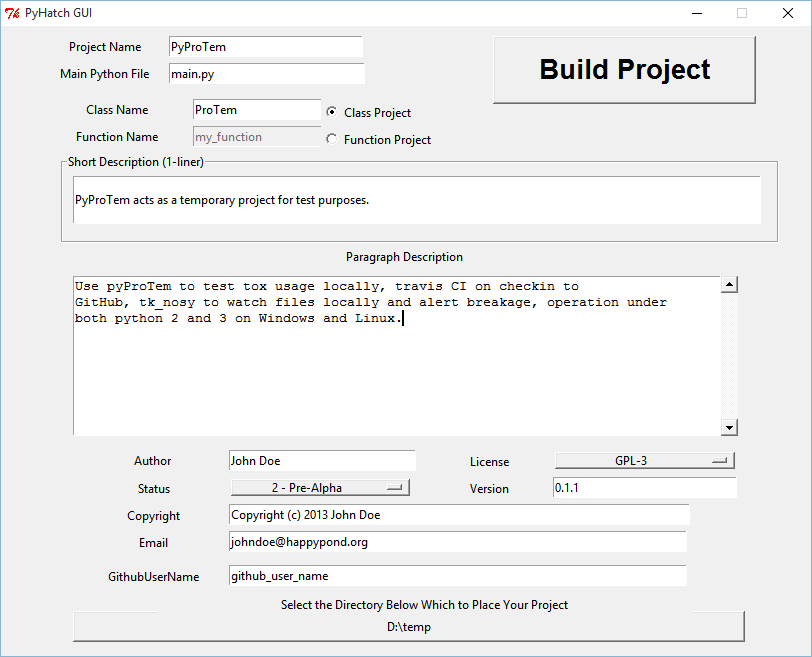Example¶
PyHatch Python Script¶
An easy way to use PyHatch is to set up a python script that creates a
Hatch object and then saves that object to the subdirectory of your choice.
The example below will create a subdirectory called PyProTem in the user’s home directory. PyProTem will contain all the project files.
The example_1.py file from the installed example subdirectory is shown below:
import sys
import os
from pyhatch.hatch_supt import Hatch
SIMPLEDESC='''PyProTem acts as a temporary project for test purposes.'''
LONGDESC="""Use pyProTem to test tox usage locally, travis CI on checkin to
GitHub, tk_nosy to watch files locally and alert breakage, operation under
both python 2 and 3 on Windows and Linux."""
h = Hatch(projName='PyProTem',
mainPyFileName='main.py',
mainDefinesClass='Y',
mainClassName='ProTem',
mainFunctionName='my_function',
author='Some Guy',
github_user_name='somekindaguy',
proj_copyright='Copyright (c) 2015 Some Guy',
proj_license='GPL-3',
version='0.1.3',
email='someguy@someplace.com',
status='4 - Beta',
simpleDesc=SIMPLEDESC,
longDesc=LONGDESC,
year=None, # if None, set to this year
organization=None) # if None, set to author
# This example places project into user home directory
h.save_project_below_this_dir( os.path.expanduser('~/') )
PyHatch GUI¶
Another approach to creating a project is to simply type pyhatch in a terminal and the PyHatch GUI will start. Fill in the information, select a target directory and click Build Project.

Note
Saving a Hatch object creates a PyHatch.cfg file in the user’s home directory.
Once the PyHatch.cfg file exists the personal information on the PyHatch GUI will be filled in automatically.
It is also possible to run the PyHatch GUI directly from source without installing it. Simply navigate to the source files and type:
python hatch_gui.py
